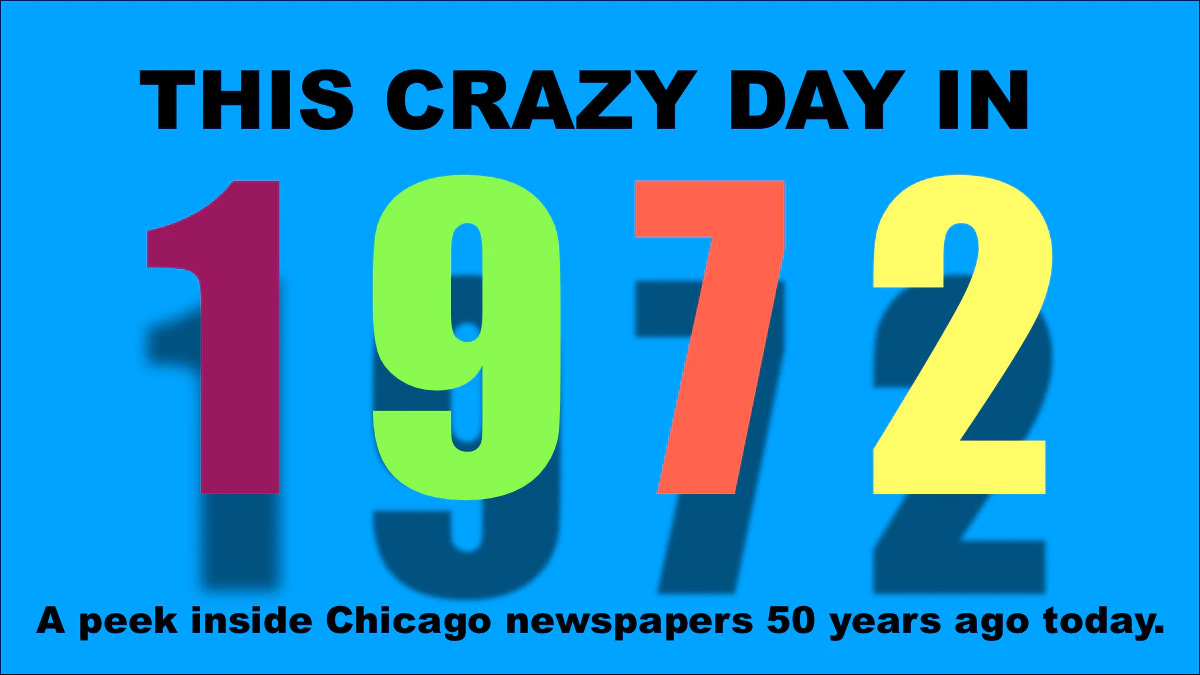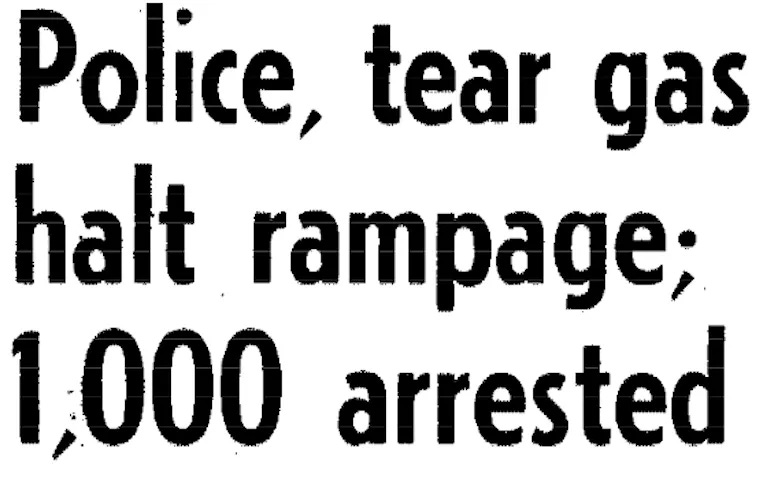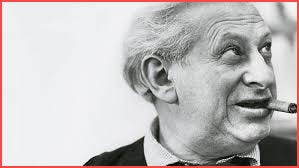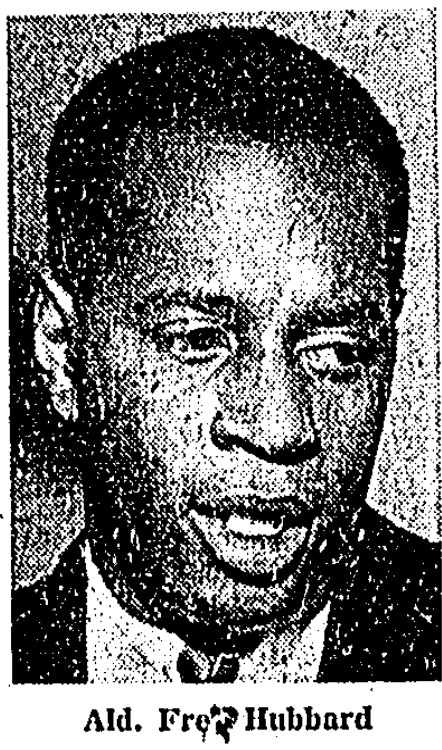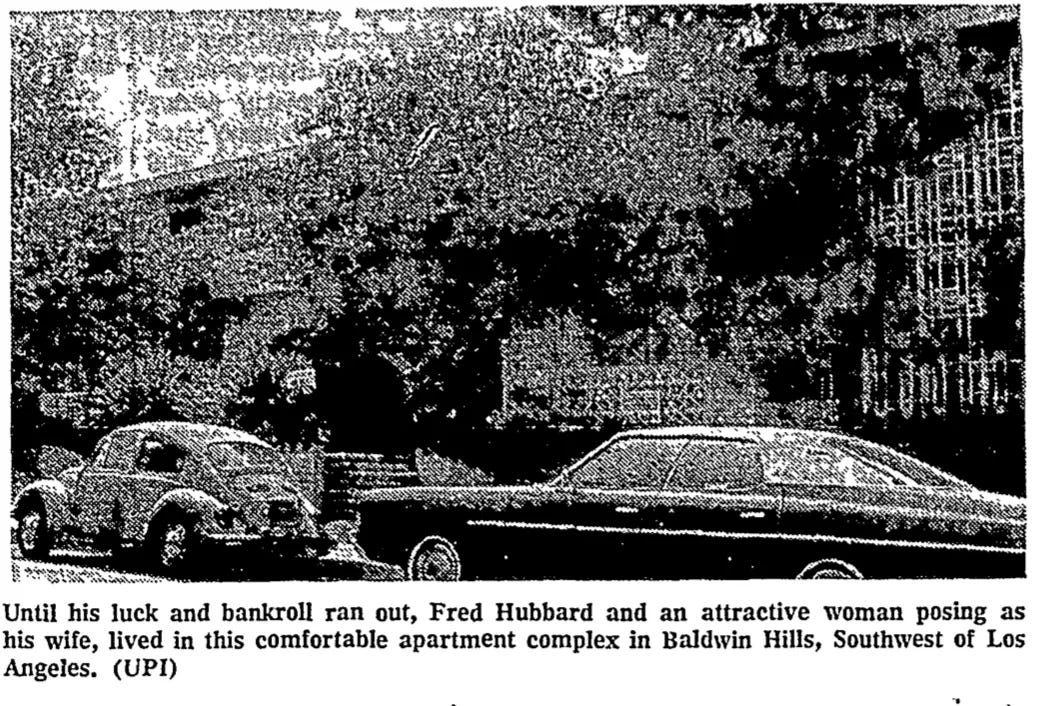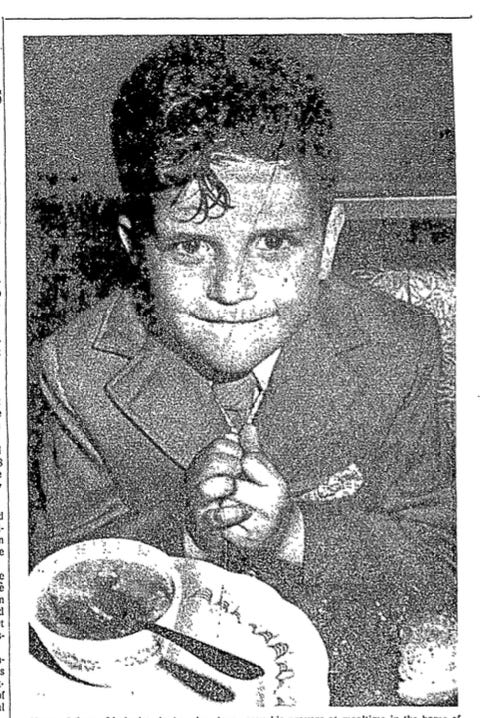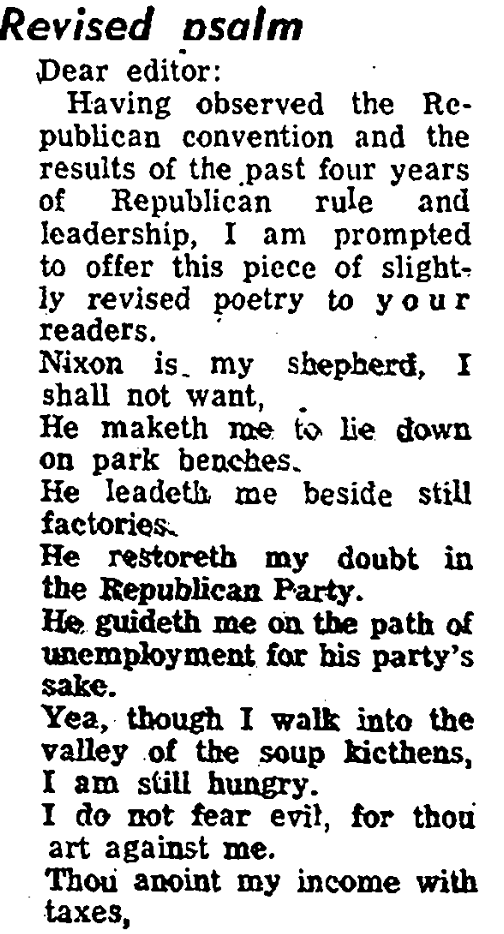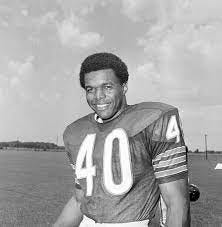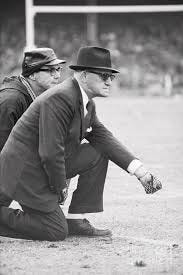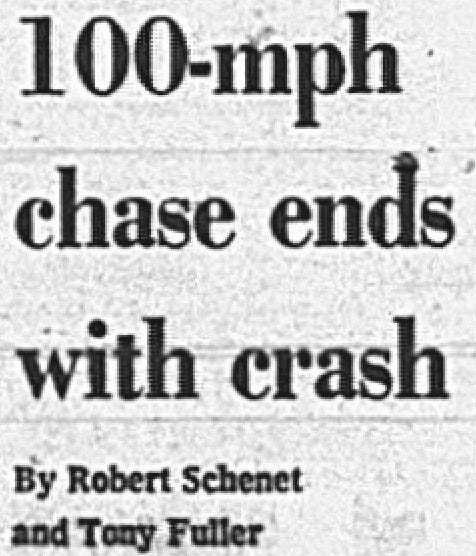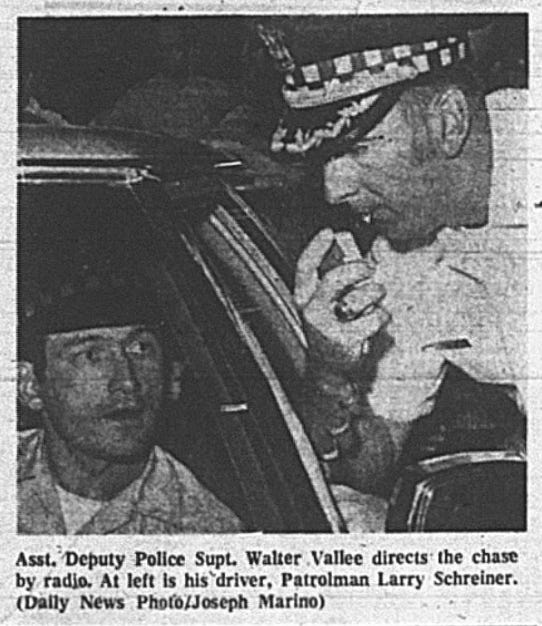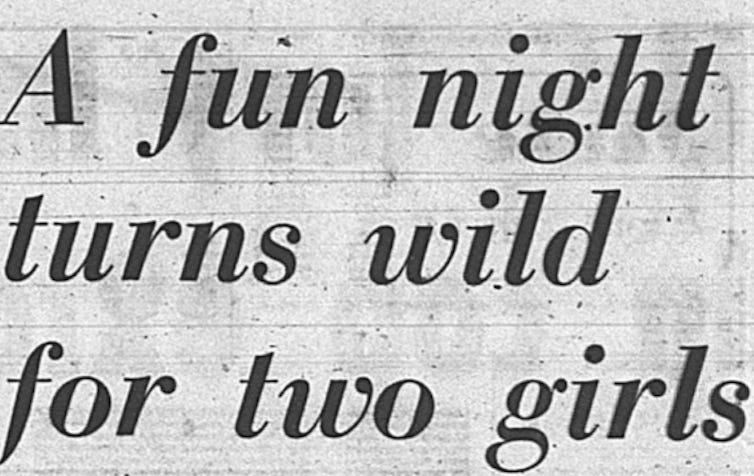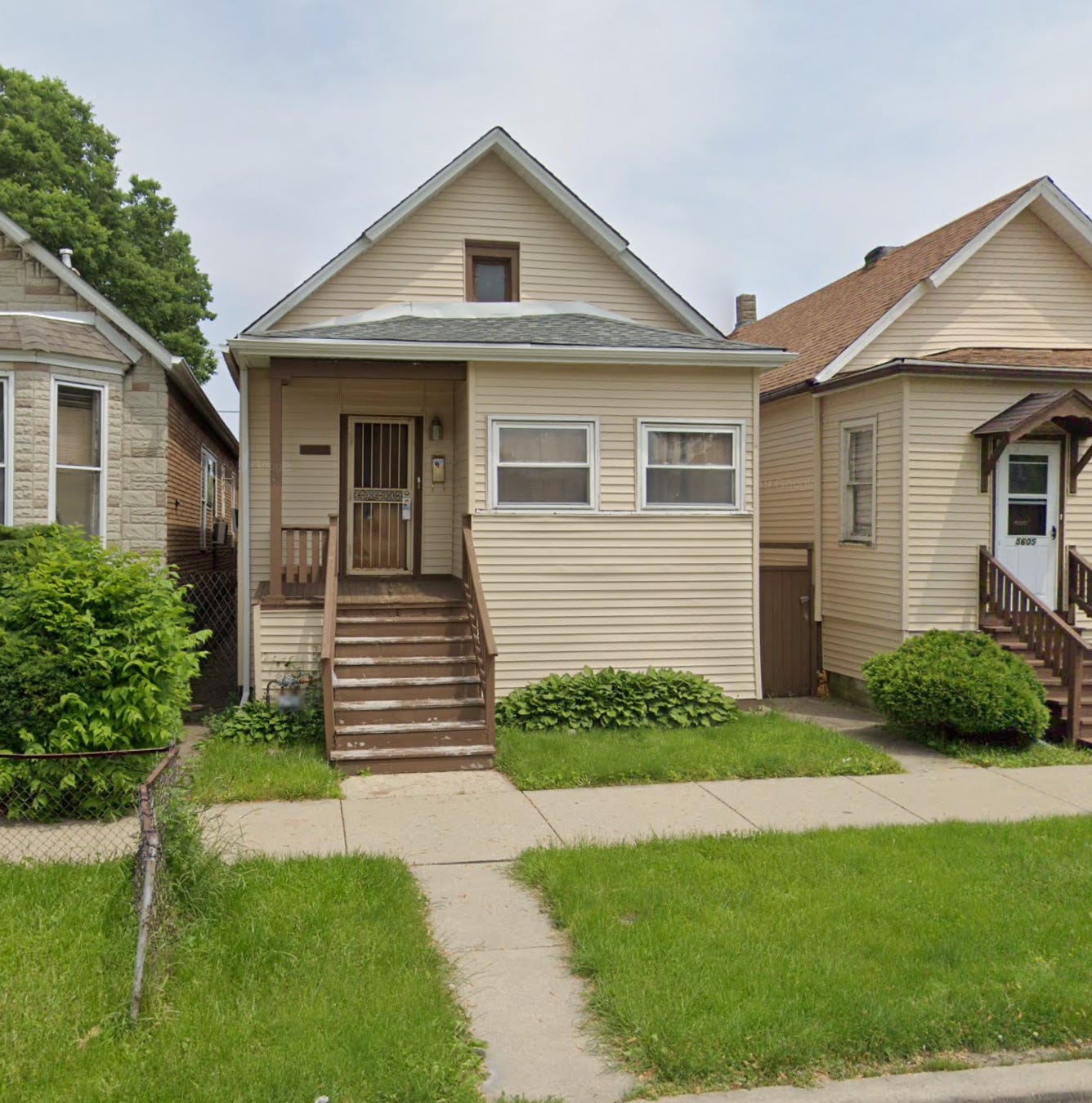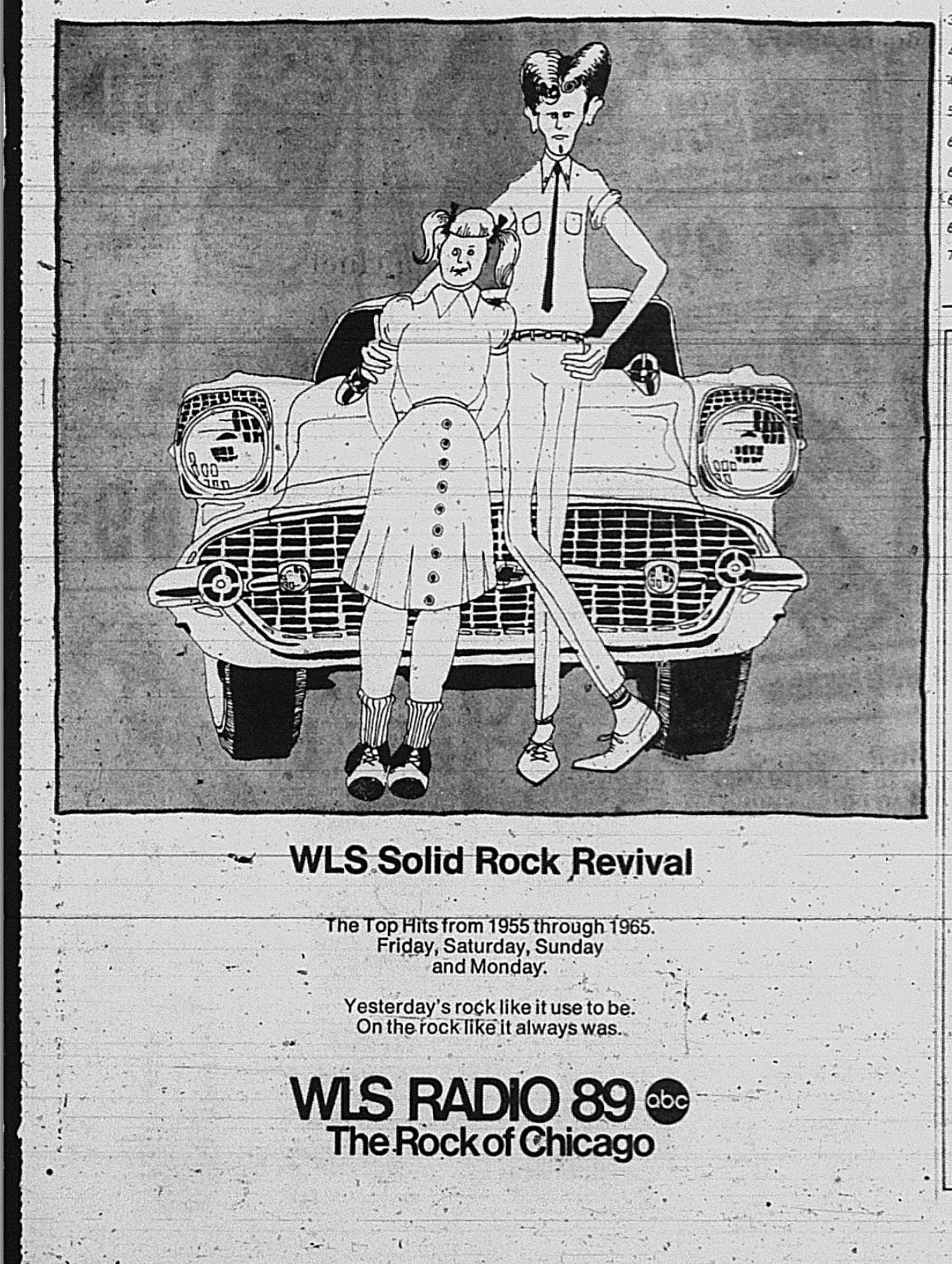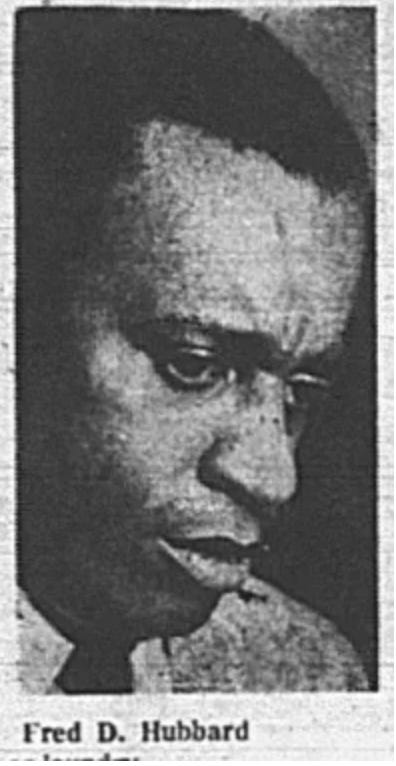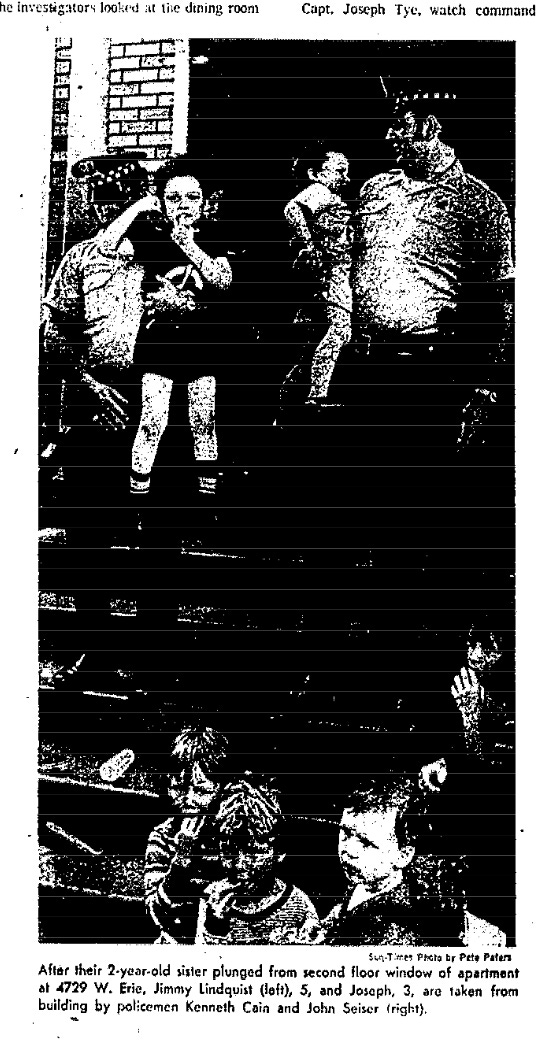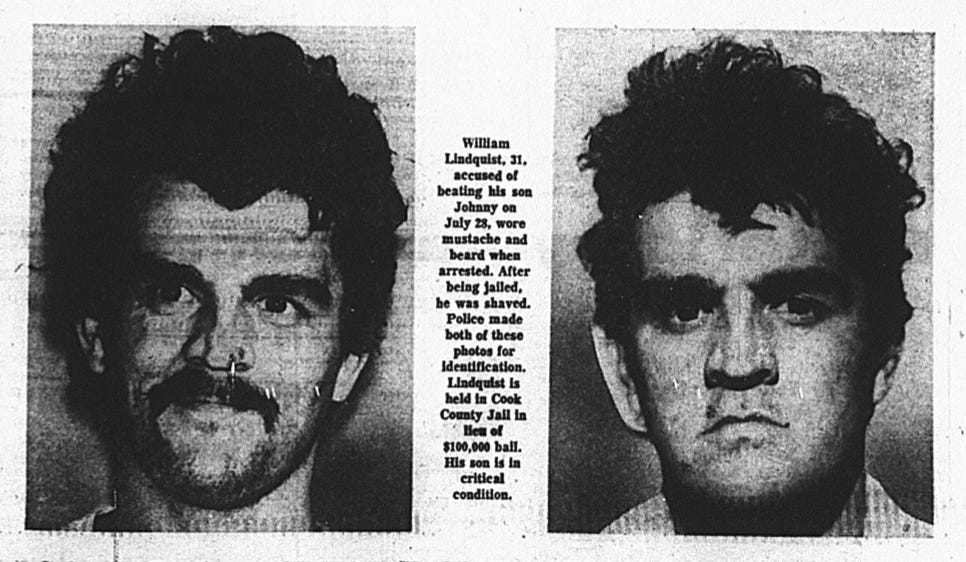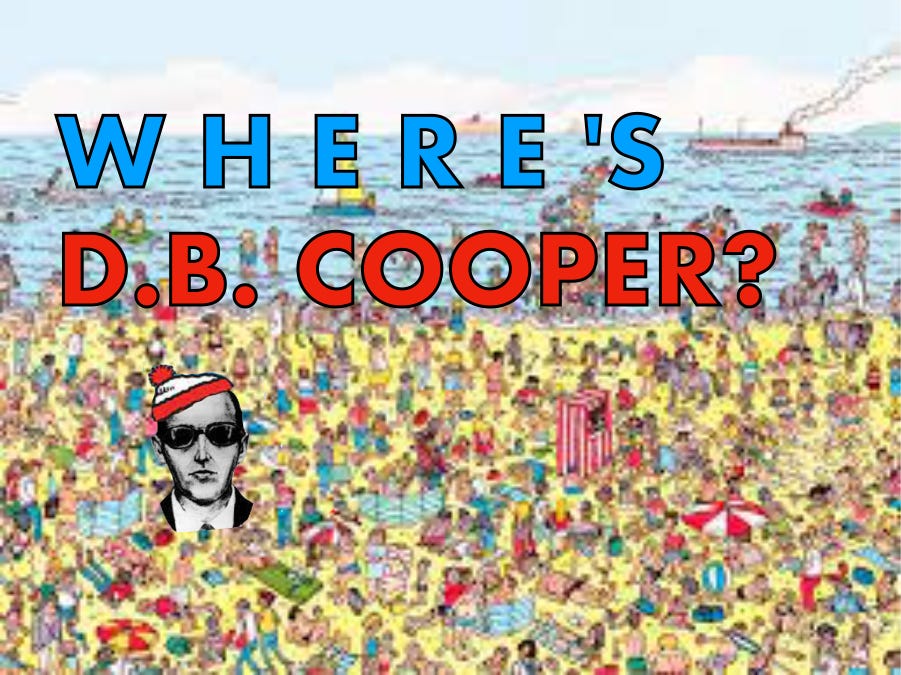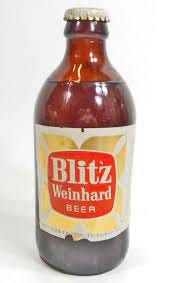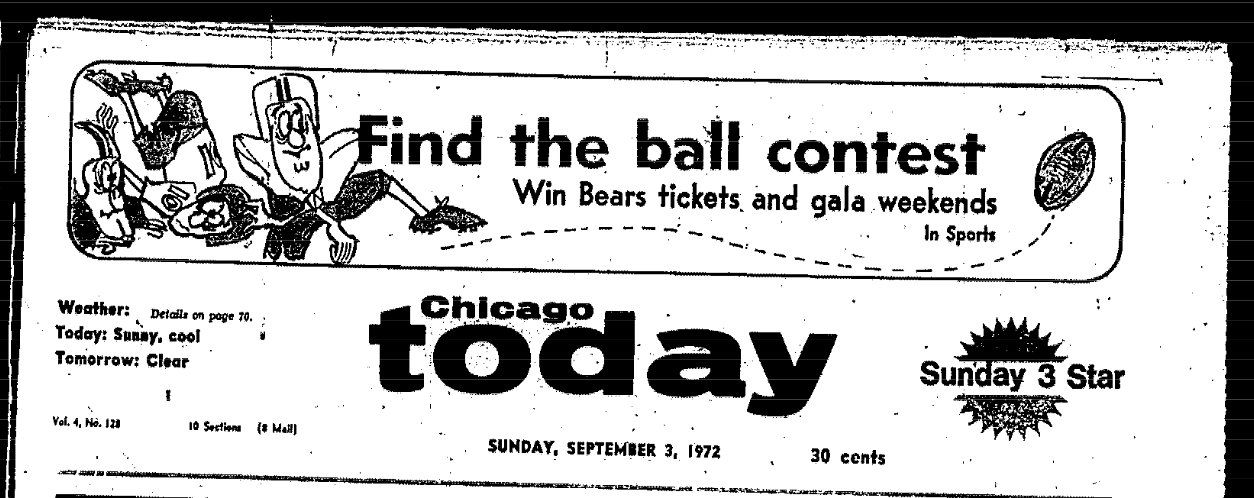THIS CRAZY DAY IN 1972: "Dog Day Afternoon" but in Chicago at night in a Japanese restaurant
August 28-September 3, 1972
To access all website contents, click HERE.
Why do we run this separate item peeking into newspapers from 1972? Because 1972 is part of the ancient times when everybody read a paper. Everybody, everybody, everybody. Even kids. So Steve Bertolucci, the 10-year-old hero of the novel serialized at this Substack, read the paper too—sometimes just to have something to do. These are some of the stories he read. Follow THIS CRAZY DAY on Twitter: @RoselandChi1972.
August 28, 1972
Chicago Daily News
Two notable letters from the Daily News today on that nutty Republican National Convention last week in Miami. Recall President Nixon got nominated for a second term, and violent mobs of young left-wing protesters rioted in a wide area around the convention hall—breaking windows, slashing tires, and taking over entire buses. Tear gas was even wafting into the convention hall, sending many delegates to first aid stations there.
When they actually arrest 1,000 people, that’s some big incident.
Letter #1
Enthusiastic Nixon supporter Sammy Davis Jr. was a big presence in Miami, hosting a “rock” concert and literally partying until dawn, per a Tribune article by Vernon Jarrett on a Black Republican party on a yacht.
Sammy’s activities didn’t sit well with H. J. Oettinger.
See the Defender’s Charlie Cherokee column item on August 30 for another take on Sammy’s hug.
Here’s the picture that enraged Mr. Oettinger, from the August 23, 1972 Daily News, in the midst of last week’s Republican National Convention in Miami:
H. J. Oettinger is a frequent letter writer to the Daily News—and all the other papers too. I’ll do a post on the frequent writers I’ve noticed, and Hank Oettinger will be prominent. I am by far not the first to notice him.
When Oettinger died in 2004 at the age of 92, he got a Tribune obituary—which noted that he appeared several times in Studs Terkel’s oral history books.
“Absolutely, he must be the world record holder for getting his letters to the editors published,” Studs told the Trib. “All the big papers in Chicago and throughout the country—even neighborhood and small town papers—he just papered them with letters, and they printed them, because he wrote short and punchy, and he was often very funny.
“He was tireless, always fighting for the underdog and the downtrodden,” Studs continued. “I don’t think you could have gone to a civil rights march or anti-war demonstration in this city in the last 50 years and not run into Hank.”
Remember, Younger Readers, that before the internet, getting a letter printed in a newspaper was about the only way the average person could communicate their opinions to a large audience. In a way, the newspapers’ letter sections were an early form of social media. Regular readers will have read many instances already in which letters answer earlier letters, and the string can go on for some time.
Two-second background: Hank Oettinger was a typesetter who moved to Chicago in 1953, joined the Communist party in 1940 and quit in 1946—but didn’t quit his radical politics. Per William Mullen’s delightful Tribune obituary, “To relax, he went to saloons to argue politics.”
More soon.
Letter #2
This one notices a hilarious difference between last week’s Republican National Convention, and the earlier Democratic National Convention, also in Miami. Although the writer fails to find the humor.
In July, Democratic delegates glommed onto what was even then a little known boycott against lettuce by Caesar Chavez’s United Farm Workers. The lettuce boycott was quite different from their earlier, highly successful boycott against grapes. A Tribune article on the sudden popularity of the lettuce boycott among Democratic convention delegates pointed out that Chavez’s Farm Workers belonged to the AFL-CIO, and its lettuce boycott was largely a dispute over the fact that the rival Teamsters had contracts to harvest about 70% of all California lettuce (which is almost all U.S. lettuce), while Chavez’s Farm Workers had contracts for less than 5%.
Mike Royko wrote about the Democratic delegates’ lettuce boycott craze in his dispatches from that convention:
Not eating lettuce has become a very big issue at the Democratic convention, just as not eating California grapes was popular among liberals some time ago.
State after state, delegations have announced at various points that they are joining in the boycott. When candidates were put in nomination, among the signs bearing their names were other signs saying: ‘Boycott lettuce.’ A foreign visitor might have thought that one of the front-runners for the nomination was named Boycott Lettuce.
State Sen. Clyde Choate, head of the Illinois delegation, got so overexcited about supporting the lettuce boycott that he declared on national television, when it was Illinois’ turn to talk on the convention floor, “Illinois has banned the use of lettuce.”
Apparently the Republicans could not resist mocking the Democrats’ lettuce obsession.
August 28, 1972
Chicago Daily Defender: Fred Hubbard and “Super Fly”
Two things going on of particular note on the Defender’s front page today.
Note the photograph, and read the caption. Not everybody loves “Super Fly,” a hit playing right now at the Oriental.
Last week, “Slaughter” starring Jim Brown opened at the Roosevelt, while “Melinda” plays at the State Lake, touted in some ads as “Your Kind of Black Film” and in others as “A New Kind of Black Film.” Tribune columnist Vernon Jarrett discussed the state of Black film with a panel on his weekly Ch. 7 program, “Black on Black.”
Also, “Concerned Mother” wrote in disgust to the Defender last week about hearing “two black youths” on the L talking excitedly with “great admiration and respect” about a movie character—who turned out to be Super Fly, who is a dope pusher— “drug dealer” in today’s parlance.
If you’re new to the tale of now former Ald. Fred Hubbard, who disappeared 15 months ago at the same time as $100,000 from the federally-funded program he headed, see last week’s first installment of Mr. Hubbard’s Wild Ride, plus the stories on Hubbard’s capture by the FBI on Aug. 23-27 in the same post.
Otherwise, we take up the story this week, in an article without a byline from the Defender:
“Supporters of Fred Hubbard informed the Daily Defender yesterday that they are going to seek a thorough psychiatric examination to determine whether the former aldermen was ‘responsible for his actions.’”
Hubbard has been described as a “compulsive gambler,” and his supporters say “because of Hubbard’s status in the community, his educational background and his life’s work, his recent irrational behavior must be attributed to an emotional disorder.”
A Gambler’s Anonymous member who calls himself “Jack” tells the Defender that the compulsive gambler is immature, doesn’t want to grow up, “and would say the only place he feels comfortable is at the poker table, because no great demands were made upon him.”
“‘Jack’ also said a compulsive gambler often seems to have a strong inner urge to be a ‘big shot, and need to have a feeling of being all powerful, and he also may subconsciously want to lose to punish himself.’”
Chicago Today
by Jeff Lyon
So Hubbard has supporters who want his compulsive gambling and potential psychiatric disorder taken into account, but his attorneys say he’s innocent.
“The long-missing Fred Hubbard soon will be freely walking Chicago streets under bond, his attorneys are confident,” writes Today’s Jeff Lyon.
“‘Once we have Fred back in Chicago and get our bond hearing I fully believe we can get him out of custody,’ defense lawyer Edward M. Genson said last night.”
Hubbard waived extradition but he’s still in jail in Los Angeles County, where he was captured last week by the FBI, pending transport to Chicago.
“Hubbard’s counsel last night revealed that they have begun gathering witnesses in preparation of a defense which they claim will ‘fully exonerate’ Hubbard. The defense is likely to be based on the contention that Hubbard as director of the Chicago Plan was unaware of the disappearance of the funds and when he found out in May, 1971, panicked and fled.”
The federal charges will take precedence over state charges.
Genson said there have been “‘some factual errors’ regarding Hubbard’s lifestyle and whereabouts and these will be cleared up.”
“‘As for the long delay in his return to the public view, that will be fully explained,’ he added.”
Genson is no doubt referring to Jay McMullen’s salacious article in last weekend’s Daily News, which claimed to detail Hubbard’s life “in a luxury love nest”.
August 28, 1972
Chicago Daily News
Channel 7 doubles down on its invention, Happy News:
August 28, 1972
Chicago Daily News
“When Johnny Lindquist turned 6 last year, he had a party on his foster parents’ farm. But on Monday, Johnny’s 7th birthday, there was no celebration.
“There were only the hushed quiet of the room in St. Anne’s Hospital where Johnny lies in a coma and dozens of unopened birthday cards and packages sent by well-wishers.
“Johnny has been there since July 28, when he was beaten unconscious.”
His biological father, William Lindquist, is in County Jail awaiting trial for Johnny’s beating. Johnny remains unconscious, in critical condition.
Johnny’s foster parents, Robert and Florence Karvanek, continue their vigil at his side. Johnny was taken from the Karvaneks in March and sent back to his natural parents, the Lindquists, though he had lived in foster homes since birth and was happy with the Karvaneks.
Meanwhile, the state Senate Judiciary Committee will begin hearings next week to possibly change the laws that let Johnny be transferred by DCFS from the Karvaneks to the Lindquists without a court order, and without allowing Johnny or his foster parents to object. Reforms are being proposed for child advocacy, so children themselves will have an attorney to represent their interests—which they don’t now.
August 28, 1972
Chicago Daily Defender: Letters
Letter #1
Republicans are aggressively courting Black voters in 1972, locally and nationally. In this issue, the Defender reports at the top of page 2 that eight local Black GOP leaders are touting Republican candidate Bernard Carey as Black voters’ “only reasonable alternative” to currently-on-trial Cook County State’s Attorney Edward Hanrahan. Recall Hanrahan is accused with 13 co-defendants of conspiring to obstruct the investigation into the 1969 predawn State’s Attorney police raid on a West Side apartment that killed Black Panthers Fred Hampton and Mark Clark.
As far as President Nixon is considered, at least, reader Pepe Thomas isn’t having it. The Defender runs an inconclusive editorial on the same subject, next item.
Letter #2
The Defender gives prominent West Side Black activist Russ Meek 100% positive coverage, but sometimes shows in its letters section that readers don’t necessarily agree.
August 28, 1972
Chicago Daily Defender: editorial
“Mr. Nixon’s invitation to join the New Majority may not go begging,” writes the Defender’s editorial board. “It may decimate the Democratic ranks where the search for unity looks rather gloomy and the results thereof hold no great promise of success.”
Looking at the Republican platform, the Defender notes that it supports home rule and voting representation for D.C., and the foreign policy and domestic sections are generally “middle-of-the-road”—except for one rather large issue:
“The Republican platform…calls for a constitutional amendment to restrict school busing if all other methods fail….The anti-busing language in this year’s platform is a sharp contrast to the 1968 platform, which pledged ‘energetic’ enforcement of ‘Statutory and constitutional protections to eliminate discrimination’ and didn’t mention school busing.”
The editorial ends without taking a specific position on Republicans, but implies that it would like to see Democrats up their game:
“The McGovern forces have a long journey ahead of them. They need all hands on board to weather the storm stirred by their own inept handling of their situation thus far. The odds are against them at this juncture of the campaign. Can they make it?”
August 28-29, 1972
Oh my. Not Chicago, but too horrifying to pass up—for any of the papers. I’ve mentioned that the Defender doesn’t cover white crime victims, but that’s in Chicago. Nationally, if white people get crazy enough, the Defender can’t resist using a UPI or AP story. This one easily qualified.
We’ll combine the AP and UPI accounts from the five papers here:
Ed and Ginger Pendleton had a fabulous Saturday night at their Wolcott, N.Y. home outside Rochester. First they hosted 10 friends and relatives for a clambake at their “small, white frame house”.
“There were steamed clams, lobster, corn and all the trimmings, plus beer and liquor, state police said Monday,” per AP.
Around midnight, the party moved to a nearby bar, Skipper’s Landing. After the bar closed, the party moved back to the Pendleton’s. The guests finally left near dawn.
It was just Edward, 31, and Virginia, 39, together alone at last after a very long night of drinking. What could go wrong?
At 11 a.m. Sunday, Ed called police to report Ginger missing.
State troopers arrived at the Pendleton home, including “Ronald Blaisdell, 20, Mrs. Pendleton’s son by a previous marriage.”
You have to wonder what the house looked like, and what Ed sounded like, because rather than wasting any time searching for a missing person, the troopers concentrated on the house.
The police, including Ginger’s son Ronald, “walked to the hot barbecue pit. In the embers, said State Police Maj. Charles E. Bukowski, were Mrs. Pendleton’s skull and bones. Identification was made through rings found in the pit.
“Bukowski said troopers put on asbestos gloves to remove the remains.”
What, do they keep asbestos gloves handy in their state trooper car trunks?
“He said questioning of Pendleton disclosed that he and his wife had quarreled. Pendleton admitted striking and pushing his wife into the fire, Bukowski said, but said that Pendleton did not know whether she was alive or dead when he shoved her.”
UPI says Ginger’s son Ronald Blaisdell was the one who found her remains. Also, the fire pit was three-by-four feet.
Ed was being held without bond on a murder charge.
August 29, 1972
By Norman O. Unger, Sports Editor
We’ve seen so far in 1972 that even high society women’s charity boards hold their shindigs at the new Playboy Towers, with nary a hint that Playboy is a platform to disseminate pictures of naked women, aka pornography. Playboy is admittedly tame by later standards, which is why Playboy will launch Oui next month in our 1972 timeline, to better compete with Penthouse. I wonder if high society ladies would have held parties at a Oui Club, or a Penthouse Club.
Anyway, since Hugh Hefner and Playboy were so successful in making pornography a mainstream, socially acceptable business, the only thing remarkable about Dick Butkus inking a deal with Playboy is that his wife reportedly expressed “a hint of reluctance”.
Recall that Dick Butkus is a proud native son of Roseland. Fun fact: Dick was the youngest of eight, and the first born outside the family's tiny four-room house at 10324 S. Lowe—of course at Roseland Community Hospital..
Butkus, “whose name is synonymous with football in the Windy City,” will host a luncheon in Playboy’s V.I.P. room every Monday after home games for “‘arm chair quarterbacks’ who want the facts behind the game straight from the horse’s mouth.”
There will be film clips.
Defender sports editor Unger notes that three Bears’ “beds” from last year are currently empty—George Seals, Dick Gordon and quarterback Jack Concannon. Later, he clarifies that Seals and Gordon are still negotiating with the Bears. “And one [bed] has yet to be made for their star running back, Gale Sayers.”
Unger wonders if the new Butkus venture means “another (bed) may soon come up empty.”
“When asked if this could be the beginning of bigger and better things, Butkus replied, ‘Of course I realize that I’m getting older, and I can’t expect to play football forever. This doesn’t mean that I plan to quit football soon, but when that time comes, I do want to be able to have something in the nest.”
Unger notes last Sunday’s pre-season Bears loss to the Packers.
“A 40-yard field goal by rookie Chester Marcol with 13 seconds to play pushed the Packers past their visitors…The loss dropped the Bears to 1-3 for pre-season activity and indicated the type of season that Bears fans can expect with the loss of Seals, Gordon, Concannon and Sayers.”
But, says Unger, “sources said that Poppa Bear is not very concerned about signing [Seals and Gordon] unless they meet his terms because the Bears are still making money ‘hand over fist’ despite the record they show.”
And, of course, the article would not be complete without a picture including a bunny. Unfortunately, her ears and tail are cropped out of the photo.
Did you know “Roseland, Chicago: 1972” is a novel being serialized at the heart of this Substack? It’s the story of Steve Bertolucci, 10-year-old Roselander in 1972, and what becomes of him. Start here if you’d like to read about Steve:
August 29, 1972
The afternoon papers get this story first.
by Robert Schenet and Barry Felcher
“Two young black men were found murdered execution style early Tuesday,” writes the Daily News. “One body was found on a deserted Wilmette street, the other in an alley on the South Side.”
Police are looking for links between these murders, and the tragic murder of 14-year-old Rodney Harris of South Shore last week, whose body was found stuffed in an Army-style duffel bag with “U.S.” stenciled on it, thrown in a dumpster at 1921 Harrison in Evanston. Rodney was last seen by a neighbor walking toward his home, just a block away.
“It was the second time in six days the body of a Chicago black youth was dumped in the North Shore suburbs.”
In Wilmette, Lawrence Green, 20, of 3653 S. King, “had been shot execution style, once behind the left ear.
“Wilmette detectives said a black plastic bag was securely tied around Green’s head which had been severely beaten.” They believed Green’s body was thrown from a car near 700 Michigan.
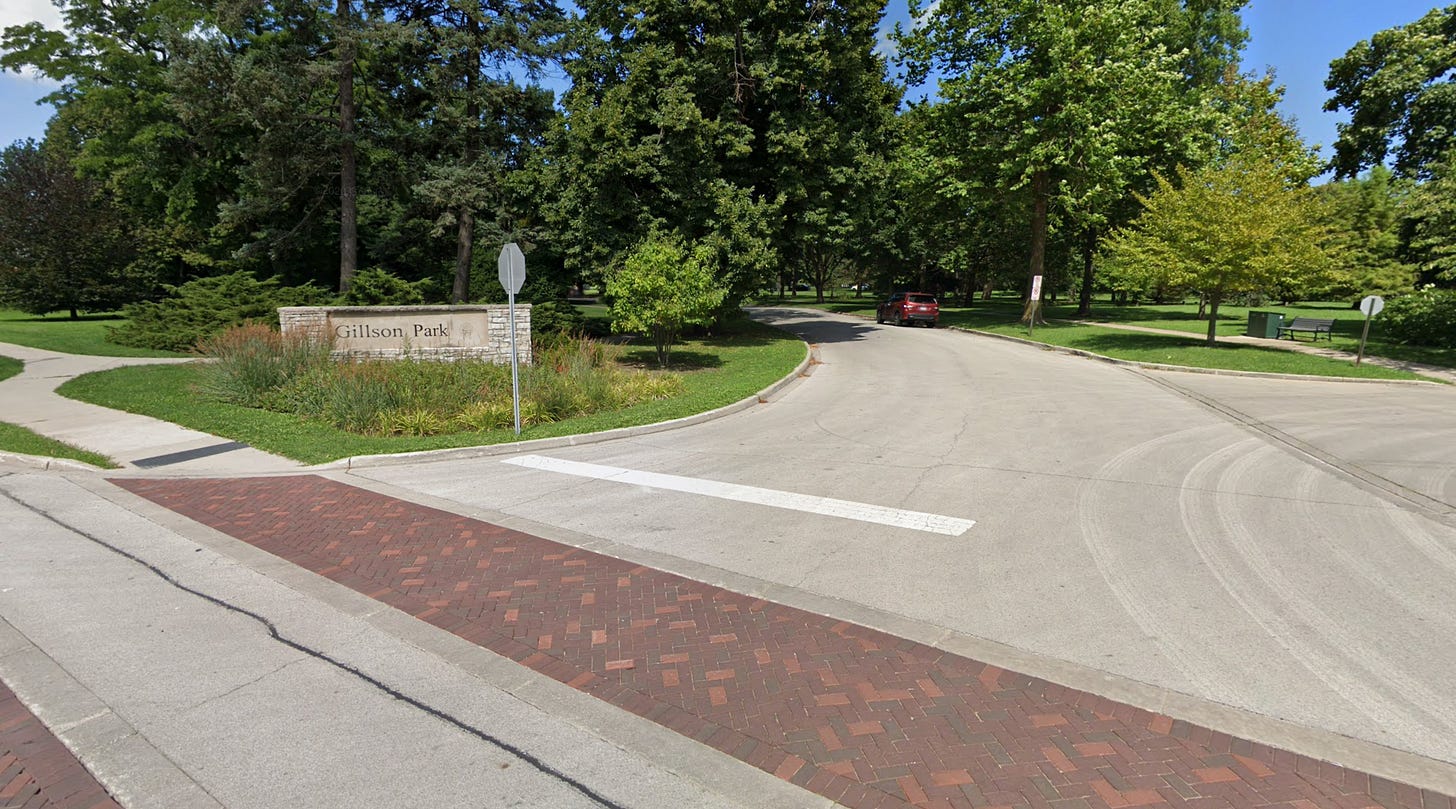
Lawrence Green’s body was spotted by a passing motorist about 2:45 a.m. He was wearing an Army fatigue jacket, he wore a ring, and the wallet in his pants pocket contained no money but did have his Army discharge papers.
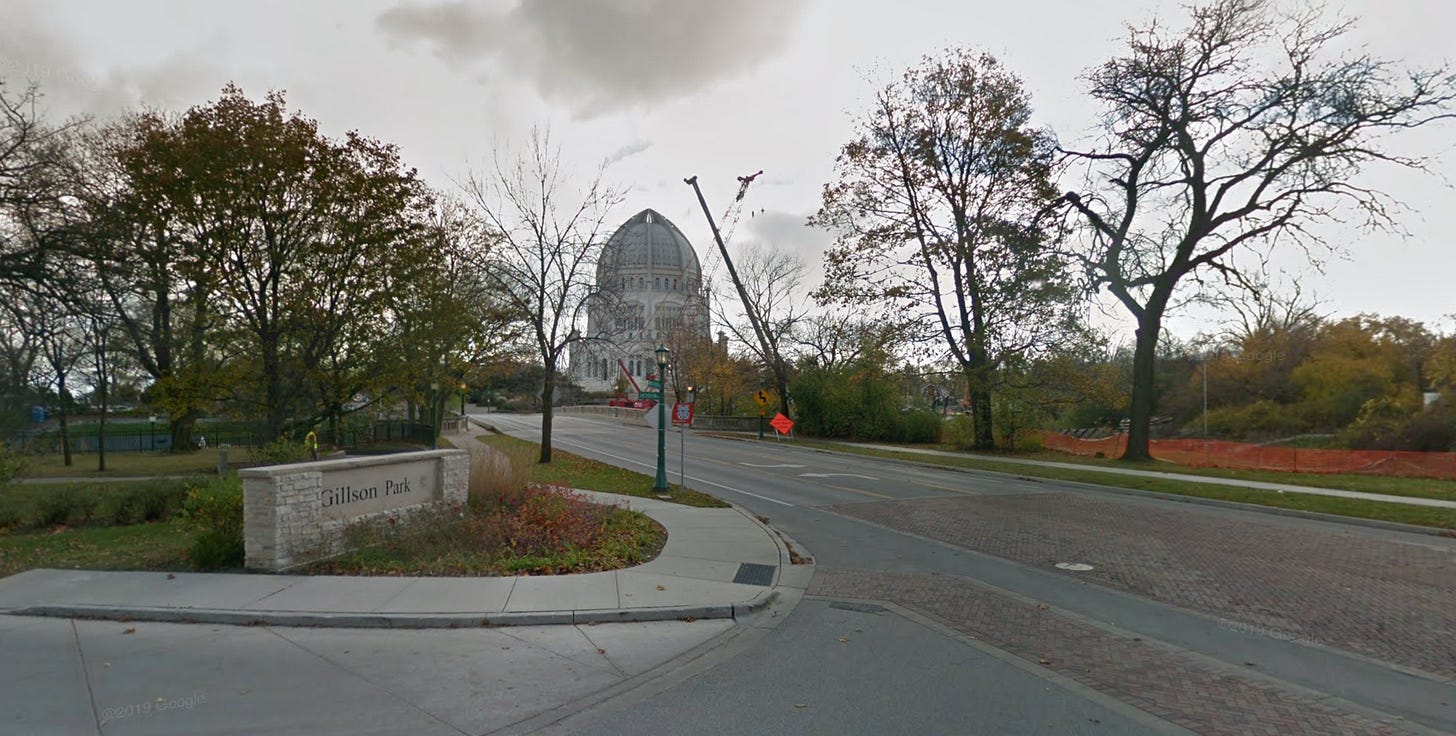
The Daily News uses a long front-page column and three inside columns on this case, mainly talking to Green’s family and neighbors. Lawrence Green had been married for six months, and the Greens had lived in their apartment on King Drive most of that time. Green’s father didn’t think he was involved with any gangs. His wife, Brenda, 22, said Green had left the apartment before 11 p.m. Monday night without saying where he was going.
Green’s neighbor said he thought Lawrence was probably going out briefly for a breath of air, because he’d just started an early shift at the Ford plant (130th and Torrence) and was still adjusting to the hours.
“He didn’t seem in any special hurry and it didn’t look as though anything was bothering him,” said Brenda.
The other recent victim is still unidentified, “found with his throat slashed and his hands tied in front of him, in an alley behind 5237 S. Calumet.” That address is now a vacant lot.
“Rusell Meek, head of Search for Truth, a black community organization, said his group sees the two killings as ‘part of a conspiracy to kill blacks.’”
Chicago Today’s Russ Marabito observes that Lawrence Green’s body was dumped in Wilmette only a mile from where Rodney Harris was found in an Evanston dumpster.
As police investigate possible links between the murders of Lawrence Green and Rodney Harris, “One glaring similarity was that the bodies of both youths were found in United States Army equipment. In Green’s case, it was a fatigue jacket; in Harris’s, the duffle bag. Both were killed elsewhere, and their bodies brought to the north suburbs.”
The Tribune, Sun-Times and Defender take up the story tomorrow.
August 30, 1972
no byline
The Defender recounts the previous facts, but reports that Brenda Green said when Lawrence Green stepped out that night just before 11 p.m., he said he’d be right back.
Note: Lawrence Green’s shift at the Ford plant started at 4:30 a.m., we already know. It’s at least a 20-minute drive from 36th and King to the plant at 130th and Torrance, taking the Dan Ryan and then Calumet (now Bishop Ford) expressways, with no traffic. So 11 p.m. was rather late for him to go out.
Brenda Green said Lawrence attended Dolittle Elementary School and Dunbar Vocational High School, then worked at Michael Reese Hospital before enlisting in the Army in 1970, where he served in Germany. He started with Ford on July 31.
“The police investigation is reported to be centered around sex and gang activities,” reports the Defender, then briefly mentions Rodney Harris. This may be the Defender’s first coverage of Rodney Harris—the paper is unavailable by microfilm or digital archives for the first day of reporting on Rodney by all the other papers on Friday, August 25. The Defender did not cover Rodney in its weekend edition, or on Monday and Tuesday, August 28-29.
Police tell the Defender they’re still canvassing Rodney Harris’s neighborhood, to see if they can find any other witnesses.
“Russ Meek, director and president of Search For Truth Inc., and recently voted ‘Westside Citizen of the Year,’ in an interview with the Daily Defender, commented on the two recent slayings of black youths in the North Shore suburbs.”
Meek notes the Army equipment involved in both murders, and that Green being shot behind the ear was similar to “the recent murders of six black Westsiders whose bodies were found in the Sanitary and Ship Canal” in the so-called police Hit Squad murders currently under investigation.
Meek theorized that the bodies were dumped in the North Shore rather than the canal because “they knew the canal area was under surveillance.”
“Denouncing the crimes, Meek said, ‘This type of murdering is not part of the black culture and poses a grave threat to the black community.’ He also chastised the white establishment saying, ‘On the question of the lack of concern (for the victims) by white officialdom and the white press as compared to the near hysteria generated when a young white hemophiliac was beaten, this indicates a sort of ‘official sanction’ for this type of genocide again black people.’”
Meek is referring to the recent case of 12-year-old Joseph O’Shea, whose family was one of two white families left on their block as their South Side Brainerd neighborhood has become nearly all Black. Joseph was beaten into a brief coma on July 28 by two Black youths who broke into the O’Shea home when Joseph was alone. His assailants then tried to burn down the O’Shea house on their way out by lighting a rug on fire and turning on the burners on the gas range. (See also July 29 and 30; and August 2, 4, and 6; August 7 and 8; August 18 and 19.)
Joseph did receive an unusual amount of coverage, which included articles noting the concerns of both Black and white neighbors about rising crime, and the fact that his case is part of a current vicious cycle starting with an uptick in attacks on the home of Black families moving into previously all-white neighborhoods, followed by attacks on whites by Blacks.
The Tribune recently ran a two-part series on the phenomenon. See Julia Honchar’s “No Welcome Mat Out When Blacks Move In” on July 9, and “Why Whites Leave, Stay in Changing Areas” on July 10. See May 25, May 26, May 27, and May 28, and July 10 for more on cases of Black families attacked in white neighborhoods. Chicago Today examined the issue on June 4.
Meek also “lashed out at the city’s law enforcement agencies. He said, ‘I would like to indict most severely the state’s attorney’s office and the Chicago Police Department for failing to bring to justice the killers of the black businessmen at this late date. If the murders of the two black youths on the North Shore had been inflicted on whites,” he said, the criminals would have been caught already.
Sun-Times
Tribune
The Sun-Times and Tribune report that an autopsy now shows that Lawrence Green died from blunt trauma to his head. “His head was so badly mangled that we were unable to tell until the autopsy whether he was shot or beaten to death,” says Wilmette police Capt. Harold Graf.
So Green’s death is perhaps less likely to be linked with the Hit Squad murders.
“Graf said the bodies of Green and Harris may have been dropped on the North Shore to get more publicity than if they were found on the South Side,” reports the Trib. “Whoever did it can now hold up the headlines and say, ‘Here’s what’ll happen to you, too, if you don’t go along.”
But police say neither Rodney Harris or Lawrence Green were known gang members. The only new piece of information is that per the Trib, Brenda Green now says Lawrence told her he was going to a bar at 57th and Vincennes when he left home the night he was killed, and had little money on him at the time.
The Tribune notes that the unidentified black man found slain on the South Side on the same night, with his throat slashed, is still unidentified.
Are Russ Meek’s charges accurate?
We can’t know if the police and FBI were expending enough resources initially, or are doing so now, on the Hit Squad murders. We only know police and FBI were already investigating the case in January 1972, when Lu Palmer first wrote about it in the Daily News. The first “Hit Squad” murder had occurred the previous September. Palmer and the News followed up on February 9, but it wasn’t until June 21 that the “Hit Squad” case broke wide open across all the papers, when authorities reported they suspected four to five Black cops comprised a police hit squad as part of a narcotics ring.
The lead suspect, Sgt. Stanley Robinson, disappeared after faking his own kidnapping, and just surrendered last week, insisting the whole “Hit Squad” story is ridiculous. The authorities haven’t come forward with definitive evidence yet linking any of the policeman with the Hit Squad murders.
The Defender also began covering the story in January 1972, a week before the Daily News, with two more follow-ups before both papers covered the case again in February. But after that, nobody covered these murders again until the “Hit Squad” allegations broke in June.
As we’ve observed elsewhere, the major dailies certainly don’t cover all the Black victims that the Defender does. In 1972, the mainstream press has only recently begun covering the Black community, and the more high profile or otherwise interesting cases involving Black victims. So Russ Meek could pick many other lower-profile Black cases that didn’t receive much or any coverage in the major dailies. Ironically, though, the Hit Squad case and these current murders don’t really qualify.
The major dailies have even covered the Rodney Harris case far more than the Defender, and from the first day his body was found. However, as Wilmette police Capt. Graf pointed out, Rodney Harris’s murder likely got a lot more attention because his killer left him in Evanston.
I don’t usually give away the end of stories, but today I’ll note that tomorrow’s Tribune is, sadly, the last time Rodney Harris’ name appears in the Tribune, Defender, or Daily News digital archives, except for a round-up look at current vicious murders in the Chicagoland area. The Sun-Times and Chicago Today don’t have digital archives I can access, but it’s unlikely Rodney Harris’ case was resolved and only covered by those two papers.
We will, however, read again about Lawrence Green.
August 30, 1972
Chicago Daily News
No byline. This is not front page news, though there will be 28 U.S. hijackings in 1972.
“American Airlines announced Tuesday it would begin inspecting all carry-on luggage of boarding passengers at its terminals as a new deterrent to hijacking.”
“The 100-per cent check of luggage, the spokesman said, would provide a total screening of all passengers. Cost of the new inspection would run more than $2.5 annually.”
Luggage inspection will happen right at the gate, before boarding—because this is an airline-by-airline, airport-by-airport practice. The Daily News notes that TWA and United have supposedly already started such searches, though United only searches for flights using 727 jets and when otherwise “necessary”.
But numerous articles this year have quoted airline personnel and passengers who say very little searching actually happens, because it’s time-consuming and the airlines seldom schedule enough personnel to do it.
American sounds more serious, because they run this full-page ad today, below—the article is from yesterday. But note that only luggage will be universally screened. Only at “selected ‘key problem’ terminals” will “all passengers” go through a metal detector. So really, skyjackers just need to forget the sawed-off shotguns and stick to more easily concealable handguns.
August 30, 1972
Chicago Daily Defender
The issue of how well the Democratic Party does, or doesn’t, represent Blacks continues in letters to the Defender—one printed in the editorial letters section, and one mentioned by the Charlie Cherokee column, regarding Rev. Jesse Jackson and Sammy Davis Jr.
Letter #1
Letter #2
And yes, Younger Readers, the Defender ran a social/political gossip column called “Charlie Cherokee Says,” starting in the 1940s. See this January 4 item for some background.
August 30, 1972: Kiyo robbery, Day 1
Kind of a big headline day.
It’s tough to choose a lede, but I’ll go with the Daily News:
“Three gunmen—caught trying to rob a North Side restaurant—grabbed five women hostages early Wednesday and led police on a wild chase across the city that ended in flames, gunfire and death.
“Two of the gunmen were killed in a gunfight with police and the other injured in the wild rampage that began at Kiyo’s Japanese Restaurant, 2827 N. Clark, and ended in the 8400 block of S. State.”

It was about 10:30 p.m. at the quiet restaurant. Three young black men came in, looked around, and left, per Chicago Today. Per the Daily News, they asked to use the washroom, but Mrs. Kiyo Smith, an owner, said no.
The men would later be identified as Michael Larry Griggs, 18, of 5603 S. Lafayette, Michael Jones, 20, of 5610 S. Throop, and Louis Tarver, 21, of 4430 S. Vincennes.
An hour later, the three men came back as 17-year-old David Smith was taking the restaurant’s garbage out in the alley—this time with a sawed off shotgun and two guns. Per Today, the gunmen forced Smith back inside, and then pushed Smith and seven other kitchen workers into the basement and locked the door.
But Smith—a member of the family who owned the restaurant—escaped through a second basement door.
The Daily News says that the gunmen “cursed and shouted at the nine employes and eight patrons…and made them lie on the floor. However…Daniel Smith slipped out a back door”.
Either way, Daniel Smith flagged down a police car while the gunmen proceeded into the dining room.
To Chicago Today’s account by Russ Marabita and Harold J. Tucker:
“Upstairs, John Boon, an accountant for Blue Cross, and his wife, Catherine, were finishing their evening meal. ‘I got up to go to the washroom. And as I was returning, I saw a young black man in a pink shirt and dark pants holding two guns in his hands,’ Boon said.
“‘I thought this was some kind of joke. But then I saw a man holding his face in his hands. There was blood running from his forehead and I knew it was a holdup.’”
That victim had been hit in the head by one of the gunmen, who robbed all the customers and emptied the cash register before realizing the restaurant was surrounded by police cars and what the Daily News called “thousands of onlookers".
The Daily News: The three men “picked Roberto De Los Rios, a 17-year-old busboy, as a go-between through whom they demanded and were given a car.”
The police also brought a car they called “The Blue Goose” equipped with a loudspeaker to communicate, and parked it in front. The Blue Goose’s battery was drained in the following hour of negotiations, and had to be pushed out of the way later.
Today says an employee volunteered their 1971 green Chevy, which the gunmen ordered police to park in front of the restaurant, and hand over the keys.
Assistant Deputy Police Supt. Walter Vallee, commanding the scene and later chase, said “when asked to surrender,” the gunmen said, ‘We’ll kill everyone in here if you don’t get that car out front.’”
“Gun blasts rocked the restaurant inside, as the bandits…blasted away at the backbar of the lounge,” according to the Daily News. “Whiskey dripped from shattered bottles and the women selected as hostages screamed as police, acting on the bandits’ orders, brought a green Chevrolet to the front door and blocked off Clark St.”
Per Today, “To make sure no police tried to enter the restaurant, one of the gunmen fired two shots into the ceiling and then told one of the customers to tell police one of the patrons had been slain.”
Everyone agrees that a hostage inside was heard screaming: “Clear the streets! They’ve got guns! They’ve got real guns! They’re going to kill us!”
Finally, after The Blue Goose was pushed out of the way and the green Chevy was parked in front of the restaurant: “The gunmen herded the hostages out, a shotgun at the head of one, and careened north on Clark in the Chevrolet,” per the News.
Vallee ordered marked squad cars to stay away, though unmarked police cars would end up along the route. A police helicopter followed the chase overhead. The police had broken the green Chevy’s tail lights to make it easy to spot.
The gunmen took the green Chevy on a wild chase through north and south side streets before ending up on the Dan Ryan.
Chicago Today:
“Running low on gas, the gunmen pulled into Lowe’s Arco Service Station at 555 E. 61st St, where attendant Y.J. Pickald walked to the car and filled the tank. Suddenly, the car sped off without paying $10 for the gasoline [$67.50 in 2022 money].
“‘I had a gun and was going to shoot out the tires,’ Pickald said later. ‘But I had a premonition, and put the pistol back in my pocket.’
“One of the hostages told police that during the chase, one gunman turned to another and said, ‘Where’s the money?’
“‘What money?’ yelled the second. ‘I thought you picked it up.’
“Both then turned to the third gunman and asked him if he had brought the cash.
“‘No,’ yelled the third. ‘I thought you guys got it.’
“When the trio realized they had robbed the Japanese restaurant, and then forgot the loot, they were so furious they were ready to kill each other, the hostages said.”
Patrolmen Laurel Redman and Richard Ehrmann were sitting in their unmarked car on the Dan Ryan’s 87th Street overpass when the green Chevy “careened onto the ramp…sideswiped Redman’s auto…then roared down the ramp back onto the Ryan. Redman had to make the life-or-death decision to try to stop the car.”
They decided to chase the green Chevy, at 100 m.p.h., on the Dan Ryan.
Ehrmann was driving. Redman could see the hostages were being forced to lie on the Chevy’s floor.
“Pulling alongside the car, Redman made the decision and fired one bullet at the driver, apparently killing him instantly. The hostages later said that, if the police hadn’t taken some overt course of action, the gunmen had planned to kill them.
“Ehrmann, driving the police car, rammed it into the gunmen’s car, sending it off the expressway up an embankment and thru a fence, where it crashed into a parked Volkswagen.”
As more police cars closed in, “the two surviving gunmen opened fire on them. Two policemen were slightly wounded by gunfire…Griggs was wounded seriously and later died…Tarver suffered minor injuries. Jones, the driver of the car, was pronounced dead at Jackson Park Hospital.”
And a half later, somebody accidentally dropped a match nearby, and due to leaked gasoline on the ground, the wrecked cars blew up.
Afterward, Assistant Deputy Vallee said extenuating circumstances had made it necessary to stop the chase. “Those guys were going the wrong way on one-way streets, endangering the lives of everyone.”
In addition, Vallee said the gunmen drove so erratically “and at such high speeds…that every police car that spotted them got right on their tail, whether they were in on the chase or not….Some of these guys were suddenly just confronted with this whole thing out of the clear blue, and every one of them made terrific decisions on the spot.”
The hostages were Mrs. Catherine Boon, 26, of 52 W. Schiller; Mrs. Lorraine Gilkison, 46, of Rolling Meadows; Miss Phyllis Nimitz, 17, of 742 W. Addison; Donna Willey, 17, of 4731 N. Magnolia; and Misako Chiya, 23, of 524 Surf.
Note: From 2022, the idea of shooting the driver of a speeding car holding five hostages doesn’t sound like a good idea. But no one will question any of the police maneuvers in the Kiyo Japanese Restaurant scene in the immediate aftermath, at least publicly, including the hostages. And I can understand why. I’m quite reluctant to Monday-morning quarterback a life-or-death situation where I have no personal expertise, and the participants acted in good faith. Officers Redman and Ehrmann acted heroically. But you’re not the only one thinking, “Really?”More later.
by Dennis Sodomka and Jon Foreman
“Phyllis Nemitz’s mother tried to discourage her from going to Kiyo Japanese Restaurant Tuesday night.
“‘You shouldn’t go there…it’s too expensive,’ Mrs. Joyce Nemitz told her 17-year-old daughter.
“But Joyce and a friend, Donna Willy…were looking for someplace to go after washing clothes at an automatic laundry.”
Kids.
August 31, 1972
Chicago Daily News
The seismic Bobby Fischer-Boris Spassky [U.S. v. Commie Russia] chess match has been playing out for months now, following Fischer’s bad behavior as much as the chess. With so much going on in Chicago, we didn’t have time for Bobby Fischer in this first pass through 1972. Stick around next year and we’ll do weekly addendums with other great missed moments.
In any case, Bobby Fischer is the reason Mayor Daley got this cool chess set, and why the chess set rated a picture in the paper. Fischer is close to clinching the title, and chess fever burns like never before in this country.
August 31, 1972
Chicago Daily News
August 31, 1972
Chicago Daily News
If you’re a regular THIS CRAZY DAY reader, you’ll probably want to follow Mike Royko 50 Years Ago Today too.
August 31, 1972: Kiyo’s robbery, Day 2
The papers are full of new details and some slight changes in the many follow-ups to yesterday’s gigantic story, a robbery that went wrong and turned into a high-speed chase from one end of the city to an another. Police talked to reporters at police headquarters, 1179 S. State.
Chicago Today
by Michael Hirsley
Chicago Sun-Times
“Two autos speeding north on the Dan Ryan Expressway at 85th Street, six inches apart and going 100 m.p.h., will remain in the minds of Chicago policemen Laurel Redman and Richard Ehrmann for a long time,” writes Today’s Michael Hirsley.
In an unmarked police car, there were Redman, Ehrmann and two police dogs. In a 1971 green Chevy, five hostages and the three gunmen who robbed Kiyo’s Japanese Restaurant, 2827 N. Clark St., then held employees and customers inside for an hour of tense negotiations after David Smith, 17, son of owner Mrs. Kiyo Ghiya Smith, slipped out a back door and flagged down police, who surrounded the restaurant.
Today, we hear there were at least 100 police outside Kiyo’s, and per yesterday’s Daily News, about 1000 onlookers watching the stand-off from about 11:30-12:30 p.m. The three gunmen finally demanded a car belonging to an employee and forced five women hostages into it—with a sawed-off shotgun to their heads—before screeching away down Clark.
“Redman and Ehrmann had actually finished their shift early Wednesday,” writes Sun-Times columnist Tom Fitzpatrick. “In the back of their canine unit were their two German shepherds, Bruno and Robo.”
They were driving south on the Dan Ryan when “they heard a call that an officer was in trouble.”
They headed for that trouble, toward 63rd and State, getting there in time to hear gunshots and see a speeding green Chevy. “‘Hey,’ said Ehrmann, who’d been at Kiyo’s earlier in the evening. “‘That’s the car with the hostages in it. Let’s go.’”
The green Chevy sped back south onto the Dan Ryan. Redman and Ehrmann gunned the engine and followed.
Fitz: “‘They kept firing shots as they went along,’ Redman recalled, ‘and we just decided they had to be stopped for the good of everyone.’”
Hirsley: “‘The chase had gotten out of hand, the auto was endangering lives of other people besides those in the car,’ Redman said. ‘I knew it was a dying chase, and I didn’t believe they would stop.’”
“I’ve known Ehrmann for 12 years,” Redman told Fitz. “I know what he’s going to do without talking to him.”
So Redman was ready when Ehrmann, who was driving, pulled up next to the green Chevy. Redman yelled at the driver—Michael Jones, 17, of 5610 S. Throop—to pull over.
“He [the driver] was slouched down in his seat, and didn’t say anything, but he gave me a look like, ‘Are you crazy?’” Redman told reporters.
And then, Ehrmann said, the gunman in the backseat with the sawed-off shotgun —Louis Tarver—fired at them. “Their window was up and absorbed the shot. The shotgun blast went right past the hostages and they went down to the floor.”
Fitz:
“‘I think I can get the driver now,’ [Redman] shouted to Ehrmann over the wild barking of the two dogs that were leaping against their cages in the rear.
“Ehrmann nodded but didn’t answer. He dropped back from the auto containing the hostages.
“They were passing a viaduct. If Ehrmann tried to run them off the road now the fleeing auto would slam into the concrete wall at close to 100 m.p.h.
“Ehrmann waited a few seconds until the gunmen’s auto was abreast of a grassy embankment on its right.
“Then he moved up even with it and as close as six inches to it as they sped along together.
“‘I took special aim with my pistol,’ Redman said. ‘When I fired I made sure I was going to hit. The pistol was aimed about an inch below his brain. I didn’t take any chances on that.’”
Redman had never shot anyone before, but he hit his mark.
At the press conference, Redman and Ehrmann told reporters they knew what they were doing. Ehrmann had gone through police training on driving to learn how to curb fugitive cars, so “we timed it so I could curb the auto away from any concrete abutment, but with the grassy shoulder to absorb the impact, which apparently it did.” In other words, Ehrmann steered into the green Chevy to bump it up onto the embankment.
The green Chevy ran up the embankment, through the chainlink fence running along State Street at the top of the expressway, and into a parked car, “ending up in a yard at 8425 S. State St.” per a Tribune account.
Meanwhile, Redman and Ehrmann’s car “spun three times before Ehrmann could bring it to a halt.” They had a flat.
After the green Chevy came to a final rest, the front seat gunman, Michael Griggs, 18, of 5603 S. Lafayette, “sprang from the mangled car, fought a gun battle with police and was shot by Detective James Grundle”.
The hostages were helped from the car, miraculously with only minor bruises. You know nobody was wearing a seatbelt.
“The night was over for Redman and Ehrmann,” Fitz concludes. “There was only one more decision to make and they divided the chores evenly.
“Redman changed the flat. Ehrmann calmed the dog and cleaned up the mess they had made.”
The three young gunmen met at a showing of “Shaft’s Big Score” at the Roosevelt three weeks ago, surviving gunman Louis Tarver told police. Tarver, 20, of 4440 S. Vincennes, is being held on $50,000 bond.
“Police said the violence-laden movie could have inspired the irrational conduct of the gunman….In the restaurant and during the chase the gunmen threatened, kicked and punched hostages and hurled racial insults at everyone who was not black,” write the Trib’s Steven Pratt and Thomas Powers.
“While the three held 14 hostages…and while they sped recklessly thru city streets and expressways, the young gunmen acted as tho they were acting in a movie, witnesses told police.”
Detective Leonard Muscolino told reporters that Tarver had said the three youths had only planned to rob the restaurant. They’d hidden three guns and the sawed-off shotgun under bushes near the 59th and Michigan L tracks, retrieved them, put them under their coats, and ridden the L before transferring to a bus to the restaurant. Tarver told police they had visited the restaurant previously and noticed it was crowded.
Today’s Michael Hirsley, as always, gives us even more crucial details. Police interviewed the hostages, who gave detailed statements. Catherine Boone, 26, of 52 W. Schiller, and Lorraine Gilkinson, 46, of Rolling Meadows, talked with the gunmen throughout the ordeal, and were credited for keeping cool heads—even though Boone was forced to sit between two gunmen in the front seat, and Gilkinson was next to Louis Tarver in the backseat with the sawed-off shotgun.
“The two women said the gunmen threatened to shoot them several times; planned to stop at an apartment for more ammunition ‘to shoot police’; found they had left most of the loot at the restaurant in their hurry to escape; and got lost frequently.”
“Early in the chase, Mrs. Gilkison said, ‘They were swearing because they couldn’t find the Dan Ryan. One of them shouted at me to tell him where we were or he’d shoot one of us. I told him we were going north, and should be going south.’”
Apparently, at that point they were near the Kennedy at Irving Park. Anyone who doesn’t live around there and has tried getting on the expressway at Irving Park will sympathize, I think.
During the chase, “Third District Patrolman Costell Swain and Virgil Perisee gave chase and, according to Perisee, ‘they turned around and came back at us, and fired at us.’ Perisee’s left arm was grazed, but he and his partner stayed with the chase from there until the end.”
As mentioned earlier, after Officer Redman shot the gunman who was driving and Officer Ehrmann forced the green Chevy up the Dan Ryan embankment, the car came to rest in a front yard. The gunman in the front seat sprang out of the car and died in a gun battle with police, leaving Louis Tarver in the backseat with the sawed-off shotgun and Mrs. Gilkinson.
“Tarver struggled with Mrs. Gilkinson the shotgun. Police arriving at the car could not see who was who in the car and struck both Mrs. Gilkinson and Tarver with night sticks.
“‘Those were the best shots I ever felt,’ she said later. ‘I was just glad to be alive.’”
by Tom Fitzpatrick
Let’s back up to the terror-filled hour the hostages spent in Kiyo’s while the frantic gunmen negotiated with police. It was Mrs. Gilkinson’s birthday, but as she told the Sun-Times’ Tom Fitzpatrick, “From the moment they realized the police were out there until the end of it all, I don’t think that man ever took that shotgun away from my neck.
“‘He kept jamming my neck with it and telling me that I was going to die, too, if he did.’”
“Soon the gunmen began to talk about killing three hostages every five minutes until the police cleared the street, firing their guns at bottles behind the bar—to show police they meant business,” write David Satter and Fredric Soll in the Trib.
“One by one, the women were kicked and pushed outside and ordered to scream at the police to clear out.”
And yet:
“Witnesses at the scene said many people cheered when the gunmen drove away; and one man was arrested for obstructing police at the scene,” writes Hirsley in Chicago Today.
Mrs. Theresa Bentivegna lived above Kiyo’s, and described how police evacuated the four apartments in the building during the hostage crisis. “Mrs. Bentivegna, like many of her New Town neighbors, is not a police supporter but she said, ‘Those people who were against the police were wrong. The police did a really good job.’”
The Trib’s Steven Pratt visits Kiyo’s Japanese Restaurant the next day.
“Mrs. Kiyo Ghiya Smith was sitting in the first booth of her restaurant sipping a glass of dry Japanese wine and reading a telegram from a friend in Tokyo.
It was Mrs. Smith’s son, Danny Smith, who was ambushed by the gunmen as he took out the garbage, then forced back into the restaurant. As the gunmen herded the kitchen workers and patrons together, Danny somehow slipped out and flagged down a police car.
“The telegram said the Japanese papers had given front page play to the three gunmen who had robbed the restaurant Tuesday night and escaped with five female hostages in a reckless chase thru Chicago.”
“Mrs. Smith, still slightly nervous, talked about looking down two barrels of one of the young toughs’ sawed-off shotguns, but then she signaled a busboy to come to her table.”
Now, Mrs. Smith tells Pratt something chilling.
“This is Roberto De Los Rios,” she said, introducing Pratt to the busboy. “He told those boys [the gunmen] to give themselves up or they would die. I was very proud of him. But you know what? He said he didn’t care.”
Roberto, 17, of 2220 N. Lincoln Ave., is a high school senior who works at the restaurant five nights a week, per other articles.
Mrs. Smith says she loves Chicago. The robbery was bad luck, “But I also found something. The neighbors here and friends and my regular customers have been so nice. Maybe I lost something but I found the love of people and that’s very important.”
ADDENDUM
This is by definition an exciting story, with many facets that kept me thinking about it for a long time. The blanket coverage in itself is appropriate, given the sensational aspects alone. But I was surprised no one suggested the entire situation could have been better handled—even gently, and a few days later. Even though it was 1972.
Fifty years onward, officials would promise a full investigation before the first cameras stopped rolling.
The story could have ended far worse than it did—the hostages could have all been killed if Officer Redman’s aim had not been perfect and Officer Ehrmann hadn’t precisely managed the maneuver to bump the then-driverless car up the expressway embankment—and the car had not come to a stop on the street above without a further fatal crash.
But that is a lot of “and’s,” which I felt needed to be put in italics to emphasize the contingency of each piece of luck that had to combine to leave the hostages alive.
And to start, would the customers and staff have been safer if the police hadn’t created a hostage situation by surrounding the restaurant? I have no idea. Presumably law enforcement people have run this scenario and have thoughts on the odds of robbers giving up when they’re surrounded, versus shooting hostages. That’s a discussion the papers should have printed, plus a look at expert opinions on safe chase practices.
I concede it’s easy in hindsight to assume the gunmen would not have harmed the customers and staff during the robbery, if only the police didn’t make their presence known. The truth is, those people were hostages as soon as the robbery began. And as awful as it is for the three young gunmen and their families that their lives were either ended or resulted in substantial prison time, once someone threatens the lives of others, I agree with a police response that prioritizes the lives of the people being threatened. I’m just not sure what that safest response actually is.
I once worked in a restaurant that was held up by several gunmen after the restaurant closed, when the person who took out the garbage was accosted and forced back inside at gunpoint. I could easily have been killed at 16 rather than growing up to have a family and eventually type these words. There’s no reason why my children should exist right now. But we were lucky; the gunmen got their money and left. Would things have taken a worse turn if police surrounded the restaurant with the robbers inside? Beats me. I’d love to read a back-and-forth with experts debating those scenarios.
At Kiyo’s, the young men reportedly only intended to rob the place. But their behavior was so unnecessarily violent and erratic—yelling slurs and obscenities throughout, jamming a shotgun into one hostage’s neck and repeatedly threatening to kill her—that you have to wonder if the situation wasn’t headed to a bad outcome without the initial police intervention.
It’s possible that even police experts don’t have definitive answers to these questions. In the end, we may only know one thing: The initial problem is that those three young men grew up without the societal and family support necessary to value their own lives, and the lives of others, enough to keep them off that path. And that’s a tragedy for everyone.
August 31, 1972
Chicago Daily News
Apparently it was never too soon for classic rock.
August 31, 1972
Chicago Today
Any price you’re curious about, multiply by $6.75 to see what it would cost in 2022. In 1972, we see that Open Pit barbecue sauce is 3 for $6.75. Wow, that’s pretty good. Not sure about the Open Pit itself.
Steve says Open Pit was to his knowledge the only barbecue sauce available in Chicago in 1972, such that “Open Pit” meant “barbecue sauce” in the same way “Kleenex” means “Kleenex.” I wonder if Ed Pendleton used Open Pit.
In 2022, you’d need the panorama function on your phone camera to encompass the entire shelf area in any grocery store devoted to the approximately 1 trillion barbecue sauces in existence now.
August 31, 1972
Chicago Daily News
Fred Hubbard is often described as a shy, relative loner with few friends. But he has friends and associates who continue to stick up for him—even when they assume he is guilty.
Chicago Today
“Former 2d Ward Ald. Fred D. Hubbard faces more than theft and embezzlement charges when he returns to Chicago. He also is wanted for nonpayment of 115 parking tickets.
“Warrants have been issued for his arrest, charging that he accumulated 45 tickets in 1970 and 70 tickets in 1971.”
That’s $10 to $25 for each ticket, $67.50-$168.75 in 2022 money—so a maximum of about $19,000 in 2022.
August 31, 1972
Chicago Today
September 1, 1972
Chicago Daily News
September 1, 1972
by David Young
Johnny’s headline and large picture are right underneath the Trib’s top headline, taking up the top quarter of the front page.
“Johnny Lindquist, who lost his fight to stay with his foster parents five months ago, lost his fight for life yesterday,” writes the Trib’s David Young.
“The battle for life ended at 1 p.m. in the antiseptic surgical intensive care unit of St. Anne’s Hospital.”
Johnny’s foster mother, Mrs. Robert Karvanek, was by Johnny’s side every day, but she was at a Chicago relative’s home when he died. She rushed back to the hospital but was too overcome to hold a press conference and issued a statement instead, thanking everyone for their concern for Johnny and hoping “Johnny's sacrifice will prevent anything like this from happening to another child.”
Johnny’s natural father, William Lindquist, is held in Cook County Jail for beating Johnny into a coma, and now death.
“The Rev. John Erwin, Protestant chaplain in the [Cook County] jail, said Lindquist learned of his son’s death thru a television news bulletin…After hearing the bulletin, Lindquist asked the warden if he could make a telephone call, the clergyman said. He called his wife. The Rev. Mr. Erwin said he was told Lindquist ‘was quite broken up’ after hearing of the death.’”
Recall that Mrs. Lindquist told police that William Lindquist often tied Johnny up with a plastic clothesline and hung him upside down over a door for days, as he did on Johnny’s final day at the Lindquist home, and Mrs. Lindquist only got help when she noticed that Johnny was unconscious. At that point, Johnny’s entire body was covered in bruises.
Chicago Today: editorial
Associate Judge Arthur N. Hamilton of the Cook County Juvenile Court ruled against Johnny Lindquist’s foster parents’ petition to bury Johnny near his foster home in Tigerton, Wisconsin, where he spent two happy years.
Instead, Hamilton ruled that DCFS—which took Johnny away from his foster home and sent him back to the Lindquists without a hearing, and without any evaluation of the Lindquists themselves—will make Johnny’s funeral arrangements in consultation with the Lindquists.
Mr. Lindquist is in jail, charged with Johnny’s murder.
Mrs. Lindquist never visited Johnny as he lay in a coma at St. Anne’s Hospital, and then she was barred from visiting by the court. The four other Lindquist children were recently removed from her custody after two-year-old Julia fell out of a two-story window while Mrs. Lindquist was asleep.
“‘The feeling of the court is that despite what dereliction there was on the part of the parents…that it should not penalize (them) by depriving them of the last opportunity of reconciliation, if I may call it that, with this unfortunate child,’ Hamilton said.”
“The Karvaneks will be permitted to attend burial services as ‘friends of the family,’ Hamilton said. He immediately corrected himself and said ‘as friends of the deceased.’”
The Cook County State’s Attorney’s office, and a lawyer for the Karvaneks, had both argued that the foster parents should be allowed to bury Johnny.
“Only hours before Judge Hamilton’s ruling, the father asked a Felony Court judge for permission to attend Johnny’s funeral. Lindquist mumbled his request to Felony Court Judge James Murphy at a brief hearing as bailiffs were preparing to lead him away after the [murder] charge was filed….
“Your honor, I’d like permission to attend my son’s funeral,” Lindquist told Judge Murphy. Murphy said he’d have a public defender draw up the petition, but didn’t indicate whether he would agree to it.
September 1, 1972
Chicago Daily News: editorial
The Daily News is happy that American Airlines, and to a lesser extent TWA and United, are allegedly searching plane passengers for bombs and weapons.
They don’t mention it, but as noted above, 1972 is going to have 28 domestic hijacking before the year is over.
“It is a nuisance,” notes the Daily News.
Oh, they have no idea what’s coming.
“But there is solid evidence that passengers would far rather be meticulously frisked in boarding than face the risk that a skyjacker might slip through with a gun or bomb.”
Actually, when newspapers do random interviews in 1972, many people say it would be too much trouble. Not worth it.
“It’s time for Congress to provide money needed to institute the whole range of precautionary airport measures that will put an end to the skyjacking epidemic, and for the federal government to prescribe and enforce the precautions. Meanwhile, we commend American, TWA and United for their voluntary measures.”
The Daily News also runs this update today:
by Bob Rose
“LAKE MERWIN, Wash.—Nine months ago D.B. Cooper, a parachute strapped to his back and $200,000 in hijack loot in a briefcase [$1.35 million in 2022 money], jumped into the rainy night over this area from a Northwest Airlines jet.
“Neither Cooper nor a dollar of the ransom has turned up since.”
Some area residents “think D.B. is food for the fish in Lake Merwin.”
Others “figure his bones, still tangled in his parachute lines, will be found one day dangling” from a tree in the dense forest.
The FBI won’t comment, but they appear to know that none of the 10,000 $20 bills that comprised the ransom have been spent. So presumably they think the money is permanently marked. Joseph E. O’Connell, acting agent in charge, says they’re working the case daily.
“The FBI used a computer to calculate that this was the spot Cooper jumped about 2 or 3 minutes after he let down the plane’s rear stairs at 8:13 p.m. Thanksgiving Eve, Nov. 24, 1971.”
The Army sent 200 soldiers and nine helicopters for an intensive ground search of a 10-square-mile area around Lake Merwin last spring. Nothing.
“‘A soldier told me the terrain was just as rough as Viet Nam, only no vines,’ says Germaine Tricola, who runs the nearby Ariel Store and Tavern.”
A major who participated in the search agrees, but says he thinks Cooper could have made it out, if he survived the jump.
“D.B., wherever he is, has sparked a modest tourist boom for the owners of the Ariel Store and Tavern, the only oasis for miles around,” writes Bob Rose. “He’s still Topic A for the folks who frequent the place, a converted garage, sipping their Blitz beer straight from the bottle.”
Thousands of people have bought D.B. Cooper t-shirts “to show their backing for an anti-establishment man,” but Mrs. Tricola doesn’t think D.B. is any kind of hero. Though she has made a good living off him in extra beer and pretzels.
“Among the Tricola’s sporadic but dedicated customers is a Portland businessman who’s been hunting for D.B. in the woods since last December, off and on, as kind of a hobby.”
September 2, 1972
Chicago Today
There’s no explanation at all for why Chicago Today printed this today.
September 2-3, 1972
Chicago Daily News
“Bob Hope takes a bussman’s holiday” starts this caption. Merriam-Webster defines busman’s holiday—with one ‘s’—as “a holiday spent observing the practice of one’s usual occupation.” That makes sense because Bob Hope has scrupulously established a persona that eternally leers at any nearby or mentioned female, and makes constant jokes about the sexual desirability of their anatomy.
But you’ll notice that the Daily News, via AP, uses the headline “Beauty and the buss” and spells “busman” with two ‘s’’s. That’s because Merriam also tells us “buss” means “kiss.”
I did not know that.
September 3, 1972
Chicago Today’s “Find the Ball” contest is touted on the front page, carried on page 74:
“How does this package grab you? A weekend for two at the Regency Hyatt O’Hare, and two tickets to the Bears home opener Sept. 17 against Atlanta in Soldier Field.”
Here’s how the game works: Chicago Today prints a picture of football players. Somewhere in that picture, there used to be a football, but they’ve “painted it out”. That’s the 1972 equivalent of Photoshop.
“All you have to do is mark an ‘X’—in INK—at the point where you think the ball is.”
Unfortunately, the picture did not reproduce well on microfilm, but here it is anyway.
“The closest ‘X,’ as determined by a panel of judges, wins the jackpot.”
I can just picture a long table of Chicago elites poring over pictures torn out of a newspaper and carefully comparing the ink ax’s with rulers.
Other treats for the home opener winners: “Dinner in Hugo’s or The Other Place…Cocktails in the Polaris and the Ding-a-Ling Bar…Floor show and cocktails in the Blue Max…Wash and set for the lady in the Regency’s beauty shop…Bottle of champagne on arrival.”
“One last warning: Make certain you fill in your name, address, and phone number before mailing your entry.”
September 3, 1972
Chicago Today: Knoblauch on blaxploitation genre
FYI, “Super Fly” and the current crop of Black films is going to be an ongoing discussion. Today, film critic Mary Knoblauch looks at how Black film has exploded in the last year or two, and “Super Fly” in particular, which she thinks is a terrific movie. Next week, she’ll be back with “The black case against black movies.” Among other upcoming items on this topic, Tribune columnist Vernon Jarrett is going to have a lot to say about next week’s Mary Knoblauch’s piece in particular. Stay tuned.
“The black movie boom has electrified Hollywood, big city theater owners and the black community, but it has not reached the vast American majority of whites—yet,” writes Knoblauch.
“Little more than a year ago, the industry that makes American movies sat stunned as they looked at the grosses for ‘Cotton Comes to Harlem’ [which she calls ‘the first big black movie’] and ‘Sweet Sweetback,’ and ‘Shaft.’”
The first two movies, she says, grossed tens of millions of dollars without “any kind of second run…outside of a few black neighborhoods”. Recall that in 1972, movies open often in one big downtown theater for their first run, then expand in a second run to outer neighborhood theaters.
Knoblauch says the movie industry followed its usual pattern of examining a new type of film to figure out what formula they could extract to repeat the financial performance, then applied that formula indiscriminately. “And ‘Sweet Sweetback,’ with its sex, violence, profanity, and racial hatred was their model,” she writes.
Knoblauch sees a parallel with the many “youth films” made after “Easy Rider” made it big. The new black films were successful because “blacks were getting a chance to see themselves on screen, as something other than a super saint [Sidney Poitier] or peripheral characters,” she writes, but “Some very bad movies made money, just on their novelty value…Already this year we’ve had 16 black-oriented films open in Chicago”.
Knoblauch says Warner Bros., thus, bought “Super Fly” sight unseen and the executives were shocked by its huge success. She says she knows why: “Because it’s such a good film…. ‘Super Fly’ to a great extent dispenses with the ‘black movie formula.’ Its characters are believable individuals who happen to be black.”
As the audience for black films grows, she notes, “black social action groups, middle class blacks, and the black intelligentsia are mounting a campaign against the black film boom that threatens to terrify an already skittish film industry out of black movies faster than it got into them.” That’s for next week.
September 3, 1972
Chicago Today
Did you dig spending time in 1972? If you came to THIS CRAZY DAY IN 1972 from social media, you may not know it’s part of the novel being serialized here, one chapter per month: “Roseland, Chicago: 1972” —FREE. It’s the story of Steve Bertolucci, 10-year-old Roselander in 1972, and what becomes of him. Check it out here.



